
The second smallest country of South America offers diversity second to none. Whether you travel to the tropical cloud forest of the Amazon Jungle or to the snow-capped peaks of the Andes, there is so much to choose from. Alternatively, you may choose to dive into Ecuadorian culture and visit the colourful crafts market of Otavalo or the bustling colonial city of Quito with its beautifully preserved Spanish architecture. Enjoy meeting the colourful local indigenous population on local buses and explore the lovely towns and villages we pass along the way. In Baños, which means “baths” in Spanish, enjoy a soak in the thermal springs or hike in the surrounding hills with its wonderful mountain views and array of adventure activities.
There is plenty to see and do here.
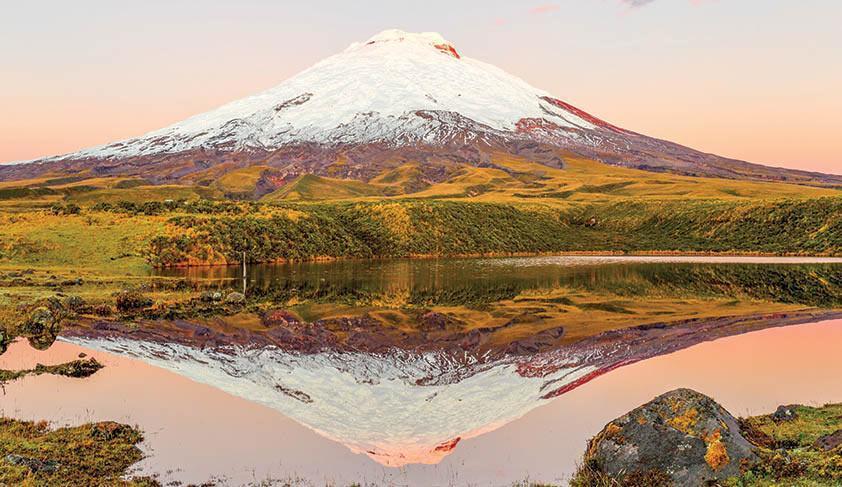
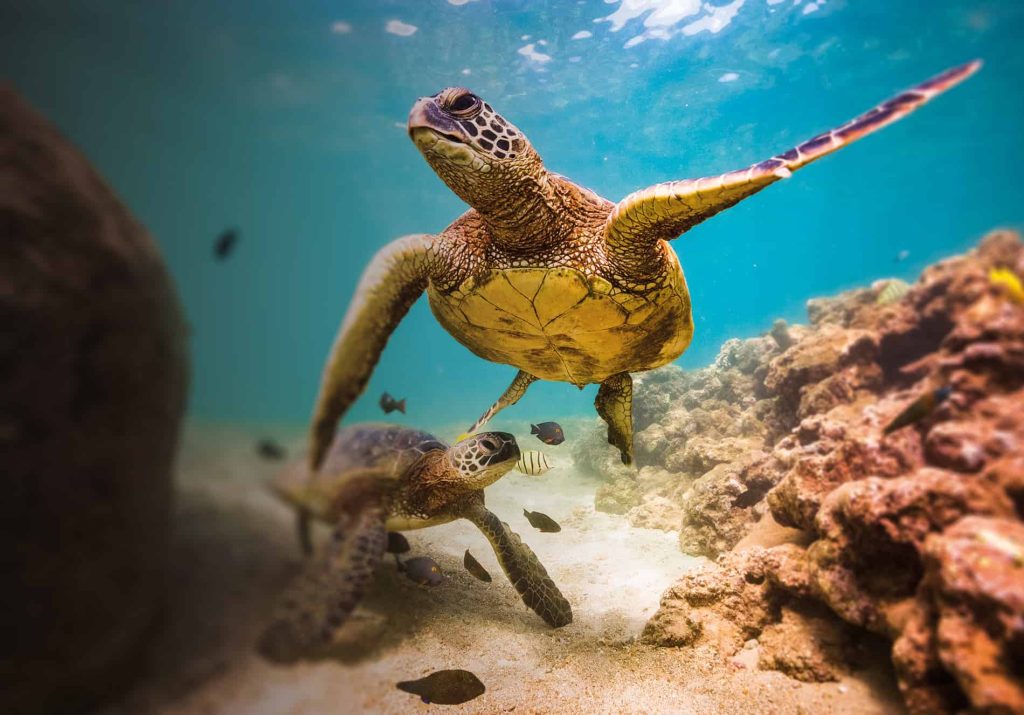
Get up close and personal with some of the world’s tamest and most unique animals on a Galápagos Island cruise. The unique wildlife may include birds like blue-footed and red-footed boobies, marine iguanas, which can be seen diving into the waves to eat algae or sea lions, which show no fear of humans and are often happy swimming with you as you snorkel. An Ecuador adventure tour never fails to please you, so don’t miss a visit to this fascinating country.
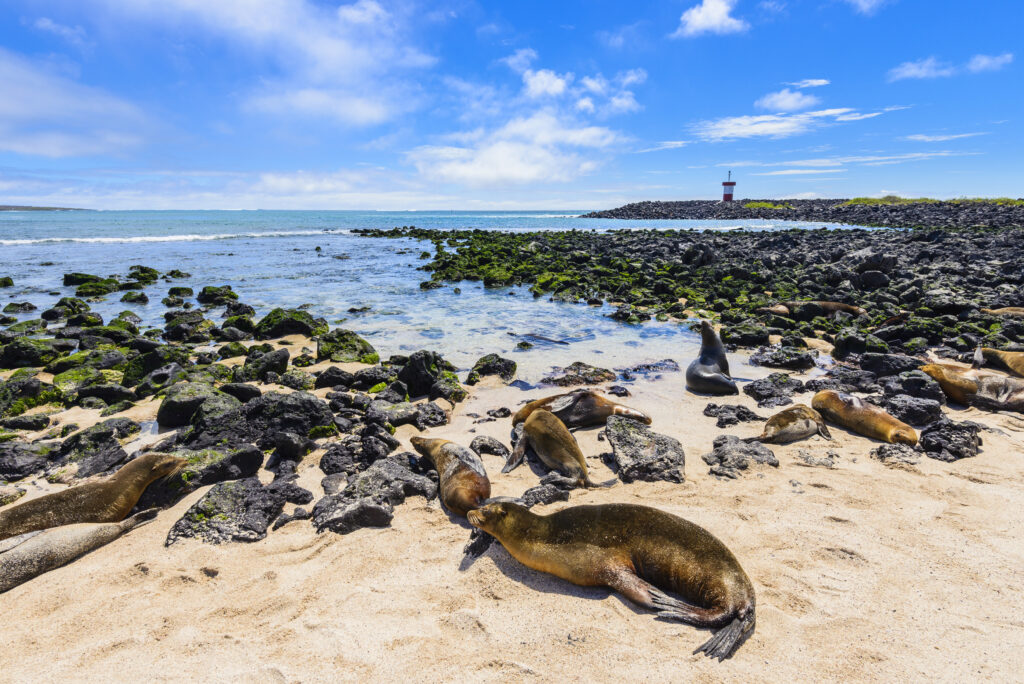
Ecuador is a compact nation densely packed with natural and cultural wonders that make it a delightful and manageable travel destination. Within the borders of this diminutive nation you can climb snow-peaked volcanoes, hike through cloud forest, explore the Amazon basin, surf the Pacific, wander cobbled colonial streets, snorkel with sea lions, barter in indigenous markets and marvel at Inca ruins… And that’s just scratching the surface. Ecuador is known for its diversity, both geographically and culturally. It is home to many indigenous cultures with more than a dozen distinct groups speaking over 20 languages. Its equatorial climate makes it pleasant year round and its geographical landscape encompasses everything from Andean mountain ranges, jungle, beaches and of course the wildlife Mecca that is the Galapagos archipelago.
To stabilise the economy, Ecuador undertook a process of dollarisation in 2000, which changed its official currency from the local sucre to the US dollar. US dollar notes are the same as those used in the United States. Coins are the same denominations and sizes as in the United States but feature famous Ecuadorians, and both the US and Ecuadorian coins are accepted as legal tender. In addition, US Sacajawea $1 coins are in circulation and are legal tender.
It is a good idea to carry your travel funds in US dollars. Larger notes, such as US$20, can be difficult to change unless you make a more significant purchase, so try to carry smaller notes. Changing $50 and $100 notes will be impossible outside banks.
Prices have risen since the currency was changed to the US dollar, but Ecuador is still an inexpensive destination for travellers. A basic set lunch costs around $3.50, and a mid-range dinner costs from about $10. The highest cost will likely be for activities and excursions such as hiking, diving, mountaineering, and mountain biking. Tipping is generally 10% for restaurant service where a service charge has not already been added to your bill. Local tour guides and drivers should also be tipped if they provide a good service.
Ecuador’s capital city is Quito, which is located in the central/northwest of the country. Its narrow labyrinthine alleys, picturesque churches, plazas, museums and markets make it a popular destination and the most common first stop on a trip to Ecuador. North of Quito is the market town of Otavalo, which has hosted one of the most essential Andean markets for hundreds of years. Ecuador’s most spectacular volcanoes the Cotopaxi and Chimborazo, are south of Quito. Near here is the popular spa town Baños, and further south is the beautiful colonial city of Cuenca, a UNESCO World Heritage Site.
From Cuenca, it is possible to visit the Inca ruins of Ingapirca. The eastern third of the nation is called the Oriente and contains much of Ecuador’s biodiversity, Andean mountain ranges and jungle. Many cities and towns here are not particularly picturesque and service the oil industry. The jungle town of Tena is a popular adventure spot and welcoming backpacker spot, as is the spa town of Baños. On the coast, Guayaquil is Ecuador’s most populous city and major port, and there are several surf and resort towns, including Salinas and Atacames.
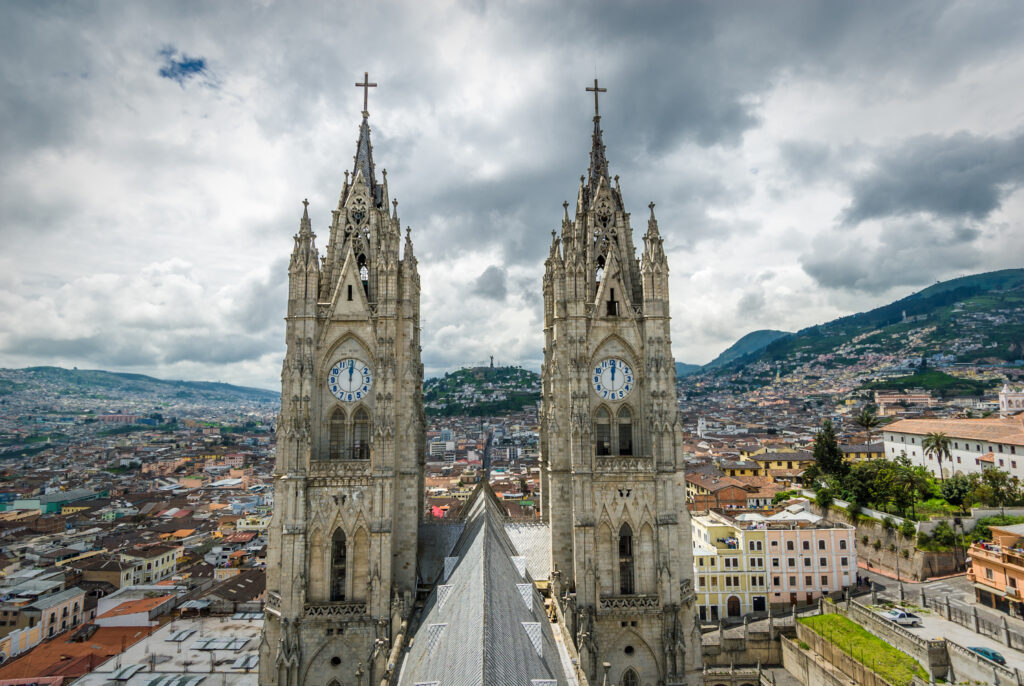
The electricity supply in Ecuador is 110 volts. Two flat-pronged plugs are used, such as those found in North America.
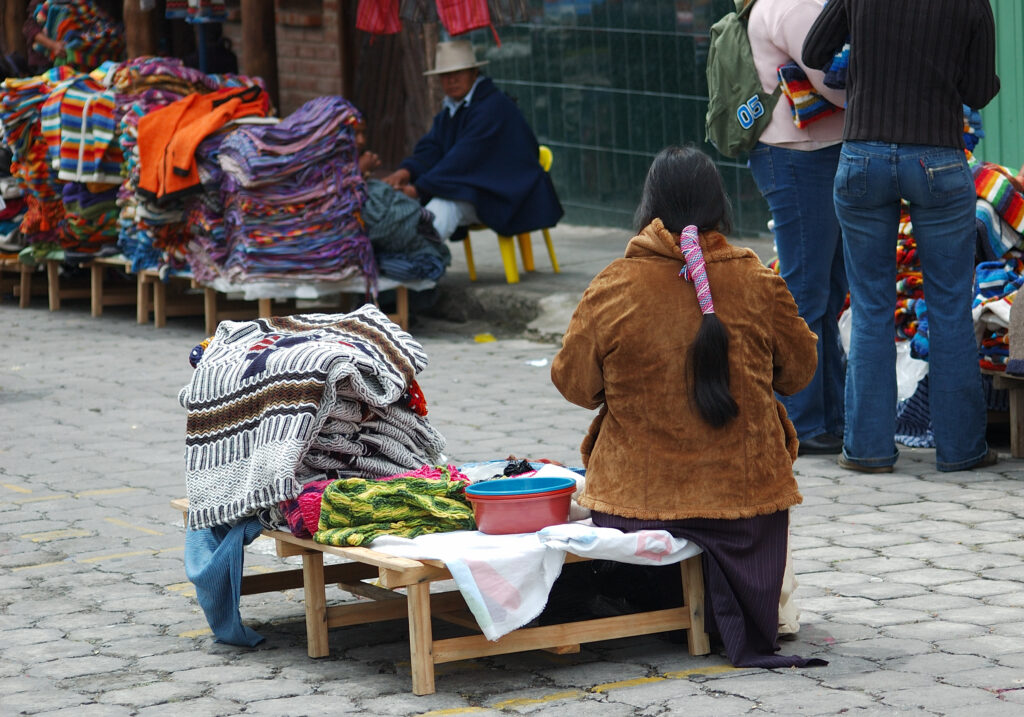
Around a quarter of Ecuador’s population is indigenous. Ecuador is home to over a dozen distinct ethnic groups, the largest of which is Quichua (or Quechua in Peru), who speak Quichua as their first language. The majority is mestizo, people of mixed European and indigenous lineage who comprise about 65% of the population. The remaining is made up of European, Afro-Ecuadorian and Asian. The country is overwhelmingly Roman Catholic, with 95% of the population following Catholicism.
Ecuador’s official language is Spanish, and even Quichua and other Indigenous people will usually speak Spanish alongside their tongue unless they are very isolated. Greetings are very important in Ecuador, and when speaking with shop owners, hotel staff, etc., it is polite to say ‘¿buenos dias, como estas?’ before beginning a conversation. Men will usually greet each other with a handshake and women with a kiss on the cheek. Note that Indigenous communities do not generally greet each other with a kiss.
Ecuador is located on the equator, providing a consistent climate year-round. It has borders with Peru, Colombia and the Pacific Ocean and is around the same size as New Zealand. The Andean mountain range runs north to south through the country’s centre, splitting the nation into two parts: the highlands and coastal lowlands to the west and the jungle of the Amazon Basin to the east. The central highlands contain two parallel volcanic mountain ranges. This region is also the most densely populated in the country. The coastal lowlands include fruit plantations and agriculture; some virgin rainforest is retained. Ecuador’s beaches have warm water year-round, and it is possible to surf. The Galapagos Islands are an archipelago that belongs to Ecuador and is made of volcanic rock.
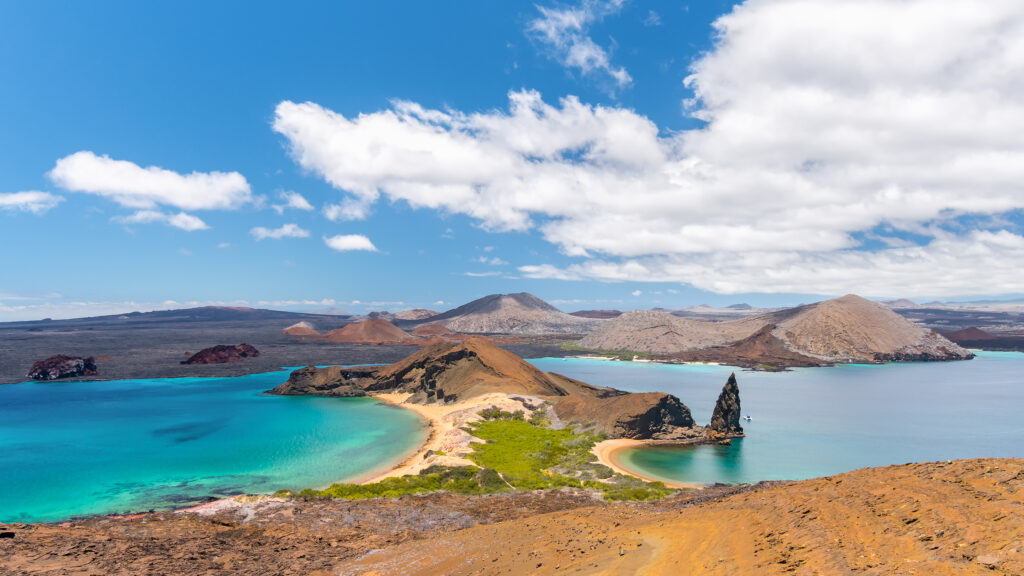
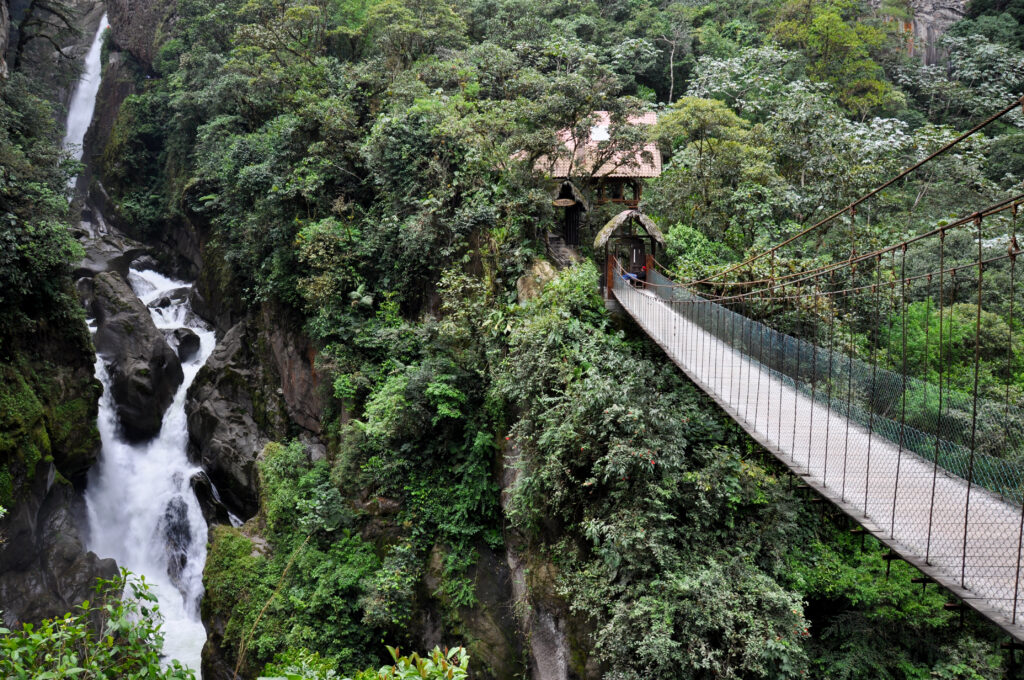
Ecuador’s earliest permanent settlements began around 6000 years ago. Early cultures included the Valdivia, famous for their pottery, and the Chorrea and Machalilla. By around 600 BC, society had become more ordered and stratified, and Ecuador had established long-distance trading routes. The Incas arrived in the 15th century. At the time, the Caras (also called the Quitu-Caras or Shyris), Puruhá and the Cañari, were the main groups.
The Incas met with fierce resistance from the local people. In conquering Ecuador, the invading forces massacred thousands of Caras, throwing their bodies into a lake near Otavalo. The lake became known as Laguna Yaguarcocha – the lake of blood. The Incas consolidated their control of the area through marriage and children, but there were many uprisings, though the Empire itself faced division. When Inca ruler Huayna Capa left the empire to his two sons, Atahualpa (raised in Quito) and Huáscar (based in La Paz), their rivalry led to civil war.
The Spanish conquistadors arrived in 1532. Led by Francisco Pizarro, the Spaniards captured Atahualpa and ransomed him for extortionate amounts of gold and silver before executing him.
Ecuador was under colonial control from 1535. Ruled by the viceroyalty of Lima, it was a peaceful colony where agriculture and the arts flourished. It transferred to the viceroyalty of Colombia in 1739. By the mid-18th century, a system of enforced labour was in place, which led to several uprisings.
The first attempt at independence was in 1809, but it wasn’t until Venezuelan liberator Simon Bolivar arrived in 1820 that independence began to become a reality.
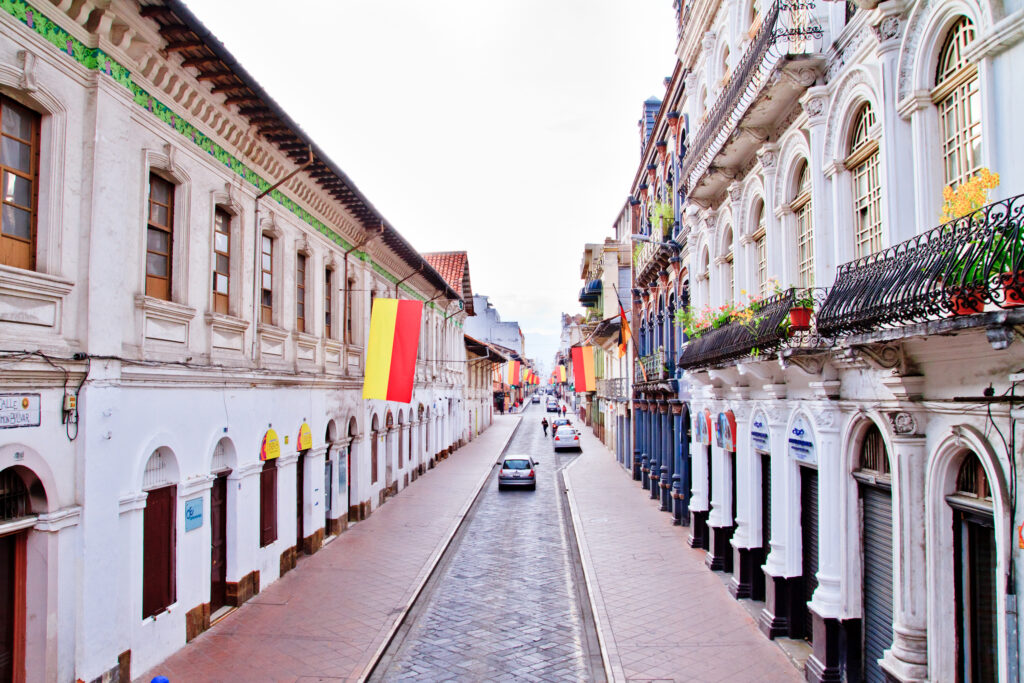

Bolivar combined Venezuela, Colombia, and Ecuador into one united nation called Gran Colombia, but this union only lasted until 1830, at which point Ecuador became fully independent.
Ecuador’s political development was volatile. Governments chopped and changed. Between 1930 and 1940, 17 presidents tried to lead the country. No one ruled for a full term. Oil, discovered in 1967, became a key export. Slumping oil prices and an earthquake in 1987 damaged the economy. In 1997-98, another oil price slump and devastating diseases that claimed 80% of shrimp exports led to massive inflation. To stabilise its spiralling economy, Ecuador took the US dollar as its official currency (previously the sucre). It also adopted austerity measures to obtain financial aid from the IMF. Since 2006, those in power have focused on social welfare, improving the lives of Ecuador’s poor, and reforming the economy.
With such a fantastic history, geography, and culture, deciding where to visit this outstanding country can be difficult!
But, wherever you go, be prepared to be amazed.
Click on this link for our top ten tours to Ecuador and the Galapagos Islands.
We are passionate adventure travelers who want to share the world and our travel experiences with everyone…
This website uses cookies so that we can provide you with the best user experience possible. Cookie information is stored in your browser and performs functions such as recognising you when you return to our website and helping our team to understand which sections of the website you find most interesting and useful.
Strictly Necessary Cookie should be enabled at all times so that we can save your preferences for cookie settings.
If you disable this cookie, we will not be able to save your preferences. This means that every time you visit this website you will need to enable or disable cookies again.
